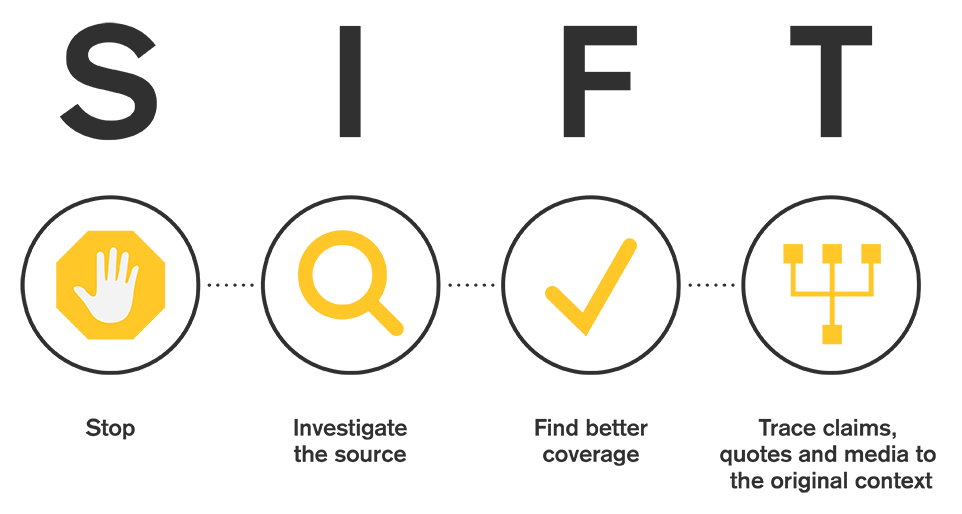It is important to practice a level of skepticism and critical thinking when consuming information online. Mike Caulfield in this weeks material introduces the SIFT method, which is a framework people can use to classify information as potentially a good or bad source. In this post I will talk about the novice-expert problem, how our perception of content can skew how we think about it, and how information online is much more personalized compared to plain text.

How I understand the novice-expert problem is that, a novice in a subject will likely accept plausible sounding explanations for something even if incorrect (using heuristics, or saying “ehh yeah thats probably true”). While an expert will be quick to identify issues with an argument presented to them. Being aware of some of the inherent limitations that people can face can help illustrate to ourselves that we should exercise critical thinking more than we may think we need to.
A number of other metrics can also skew our perception of online media. Consider the concept of “preselection”, this is manifested in metrics like views, likes, and comments. If a piece of media has high metrics, then this piece of content is “pre selected”. Because other people have given their approval of it, giving it online authority. This phenomenon could lead the viewer to believe that the information is trust worthy.
It has always been important to exercise critical thinking when presented with ideas or information, this has been true before the internet existed and is still true today. One thing that makes the internet different than reading plain text is the personal quality that is present in online material. What I mean is that, content on the internet is not just text, but also video, audio, and image. I argue that it would have been easier to be objective about information when it was represented in plain cold text. These other qualities like video, etc., I think can make it harder to be objective because of the inherent personalization of the information being presented.
In a sea of information, influencers, algorithms and online opinions, it can be hard to separate the signal from the noise. Fortunately, there are tools like the SIFT method that can give us more context about a source and make better decisions about information online.